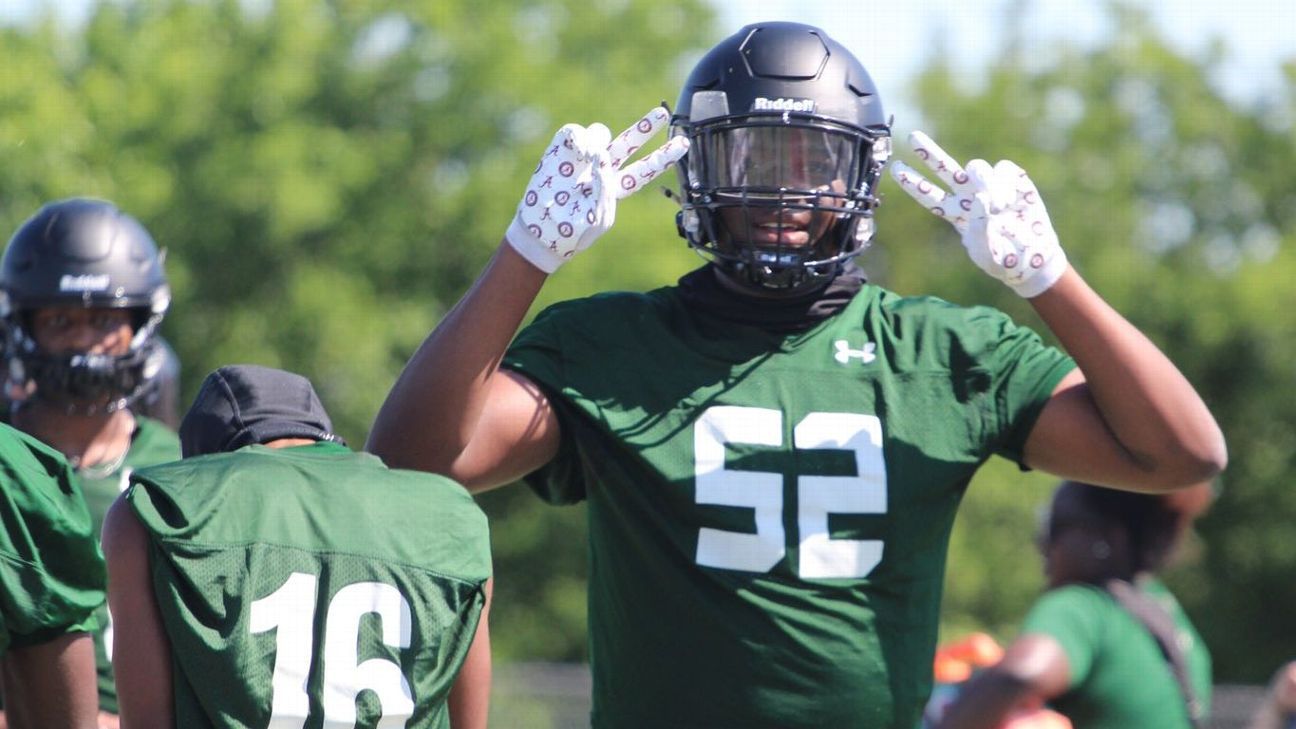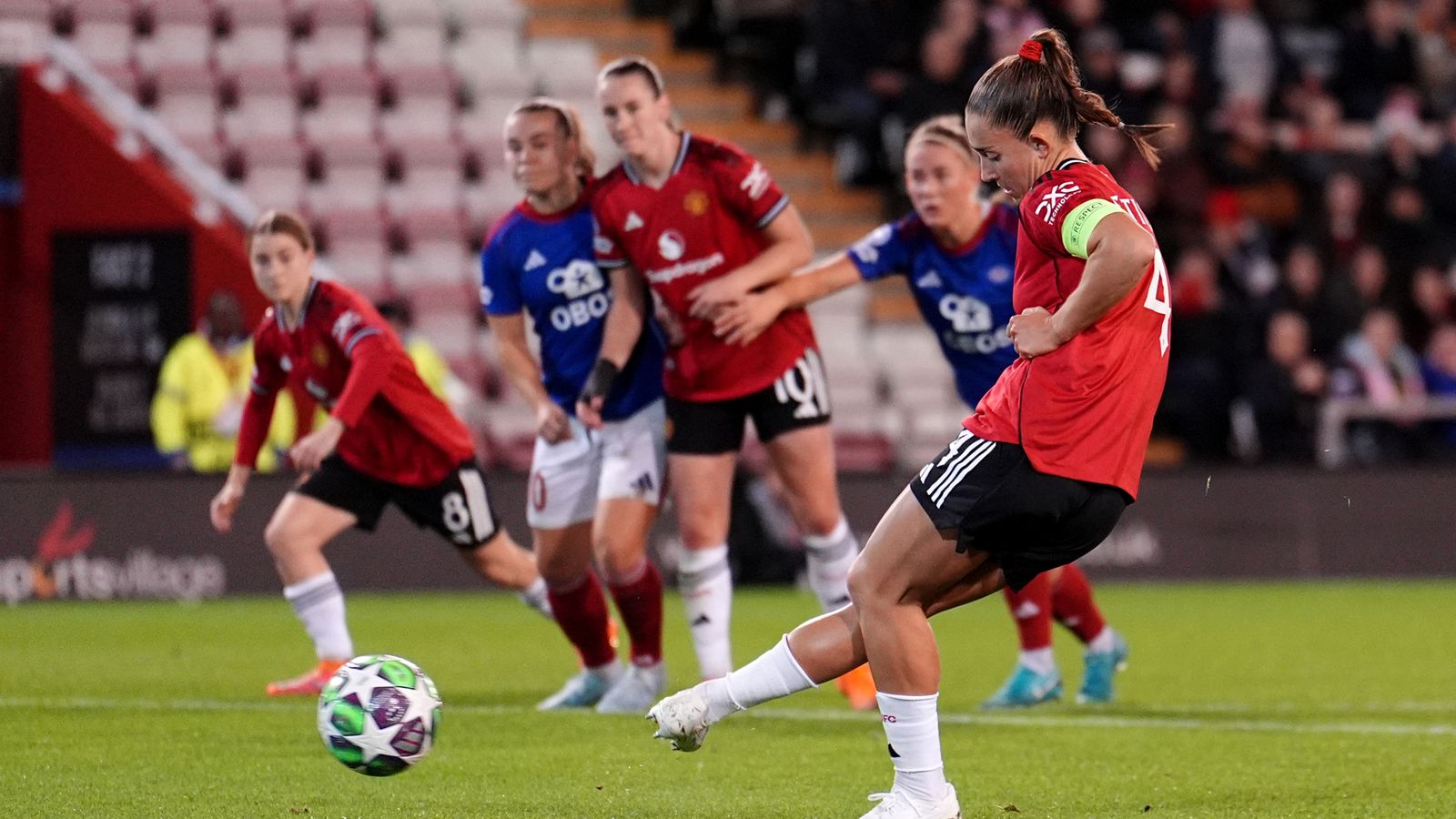
Last week, just days after college athletic programs were able to directly share revenue with their athletes, Felix Ojo, a five-star offensive lineman from Mansfield, Texas, announced his college decision. He held offers from Ohio State, Texas, Michigan, Alabama, Georgia and just about everyone else.
He chose Texas Tech.
One of the reasons was a rich revenue-share deal with the Red Raiders that a Texas Tech source said is worth at least $2.3 million over three years but that Ojo’s agent says will guarantee him at least $5.1 million.
It was a cannon shot across the world of college football recruiting.
Guys like Ojo, who is 6-foot-7, 285 pounds and can move, tend to sign with select programs. Texas Tech hasn’t traditionally been one of them, although with money now on the table to offset some built-in hurdles (Lubbock’s remote West Texas location and lack of a national title tradition), the Red Raiders are apparently here to play.
This is a good thing.
Not just for Tech fans, but for fans of so many teams like them, not to mention college football as a whole, which welcomes the recent trend of a leveling playing field to continue.
The best part, at least thus far, is that the Red Raiders aren’t alone as an upstart program attracting top-tier talent out of the Class of 2026.
Zion Elee, an edge rusher from Baltimore who is the nation’s No. 2 overall recruit in the 247Sports composite rankings, is staying home at Maryland.
Keisean Henderson, a QB from Spring, Texas, and No. 3 nationally, is committed to Houston.
Calvin Russell, a wideout from Miami, who is ranked No. 21, is pledged to Syracuse.
There is also Ryder Lyons, a QB ranked 13th nationally, who is headed to BYU, although his Mormon faith was likely a significant factor.
It is a continuation of the unregulated NIL era that saw talent begin to disseminate, at least a little, away from the same handful of teams that dominated the sport. Alabama once signed the No. 1 class in 10 of 13 seasons.
“We definitely saw [talent dispersion] improve since 2021. It spread out,” said Andy Schwarz, an economist with a specialty in college athletics and a partner at OSKR. “I don’t think we will see a big change from that world to this world. In the short term, we will see athletes attracted to the Texas Techs more. I think we will see an improvement in the spread of this year’s recruiting class.”
There are caveats, of course. Recruiting is an inexact science. Rosters are increasingly built via the transfer portal. Oh, and the Alabamas and Ohio States will still get the majority of the best players.
Schwarz doesn’t want to oversell this. The principles of economics suggest the impact will be limited and traditional schools will learn to properly allocate their money. In terms of actually winning games, after all, it is better to spend on lots of good players than just one or two great ones.
However, in the past, almost all the great ones all went to the same teams as well. Now, under the House settlement, schools can allocate up to $20.5 million to their athletes in any manner they see fit. (They could technically give it all to one player.)
That allows coaches to prioritize a specific recruit and outbid the competition. Money is rarely the only factor in recruiting, but it sure doesn’t hurt.
In the past, schools spent a passive dollar on things such as facilities, staff and other bells and whistles. Now it’s an active dollar — directly into the pocket of the player. It makes a waterfall in the locker room, or an old Heisman Trophy in a display case, matter less.
“It makes sense for an up-and-comer to try to make a splash,” Schwarz said. “It’s a chance for now, at least temporarily, for the have-nots to gain on the haves.”
Any improvement is an improvement. It may not allow 50 schools to have a shot at winning the championship, but it might mean 10 in a given year.
It doesn’t even mean Texas Tech is one of those 10. Each elite player that goes to Lubbock, however, or somewhere other than Alabama and Georgia, is one less player stocking those rosters.
Consider that from 2018 to 2025, the Tide and Dawgs basically priced themselves out of recruiting three-star players. Bama signed an average of just 2.9 a year. UGA was at 3.5. This year, Georgia already has seven three-stars committed, and Alabama six. They will still likely rank among the top five classes nationally overall, but the gap is smaller as they dip deeper into the high school rankings.
The NCAA spent millions in legal fees fighting this, shouting about the ruination of the game by claiming “competitive balance” would be destroyed. What is playing out is something quite different, if not completely opposite of the predictions.
Texas Tech just landed a five-star offensive lineman. You don’t have to be a Red Raiders fan to cheer for that.
#Wetzel #college #football #cheer #Texas #Tech





